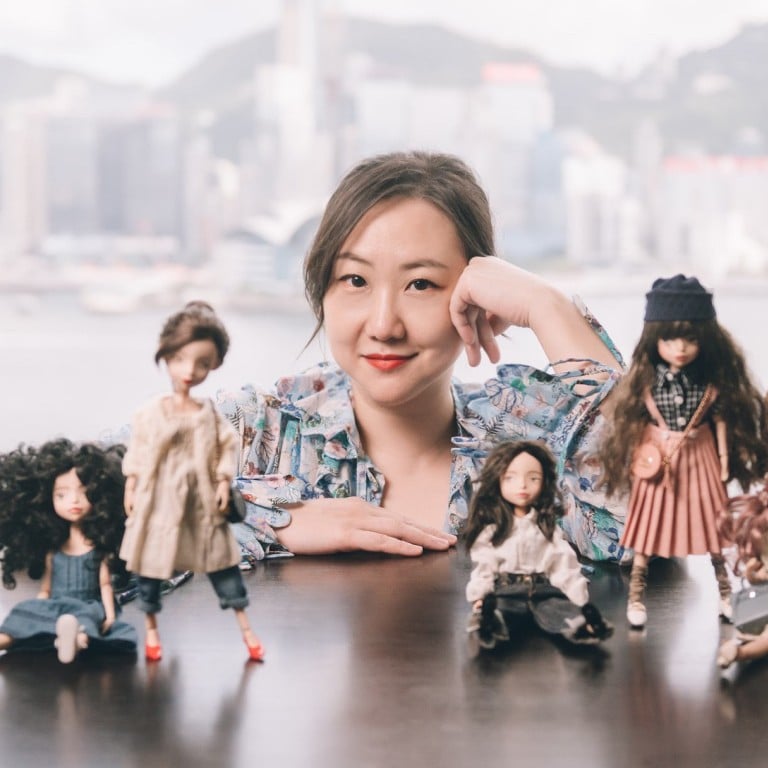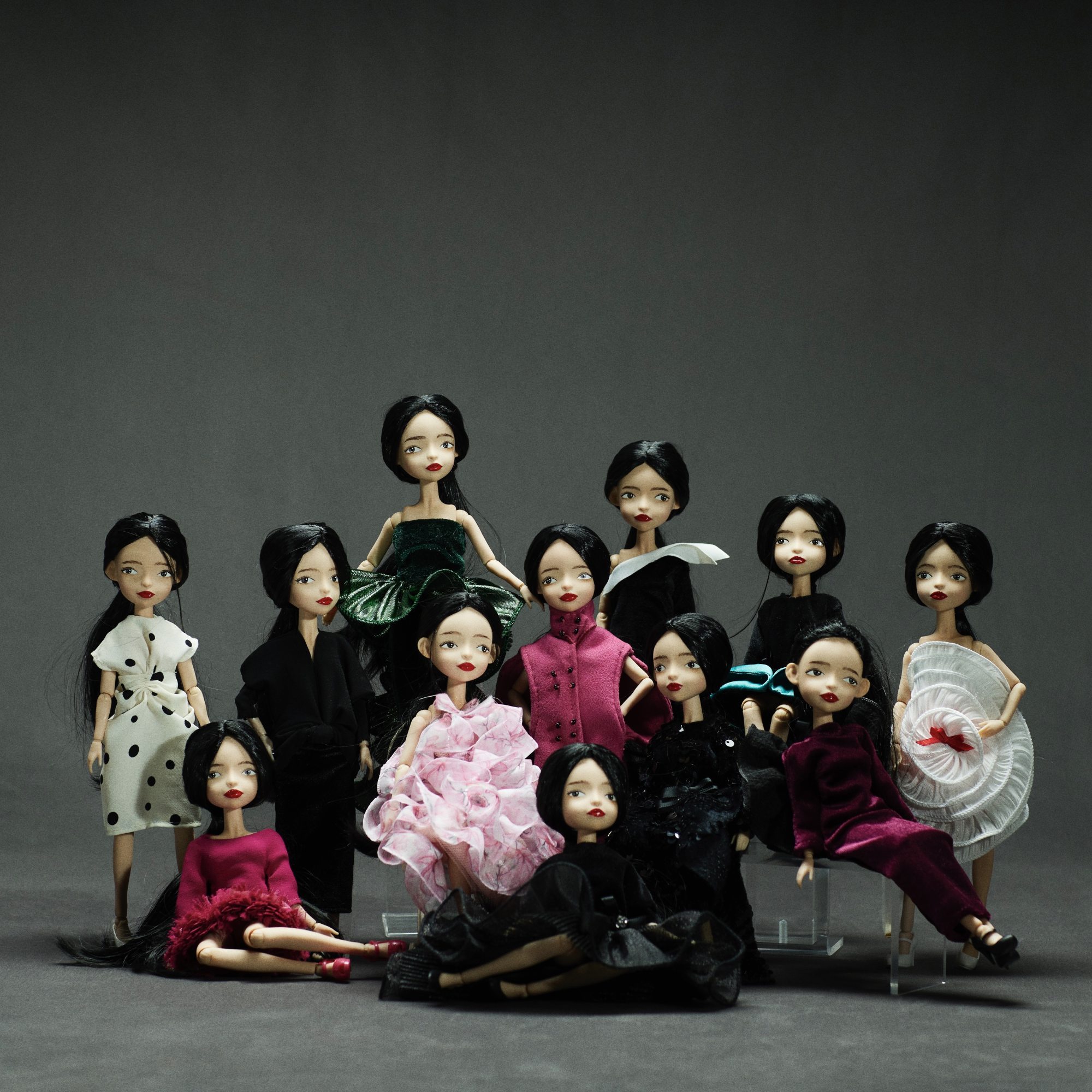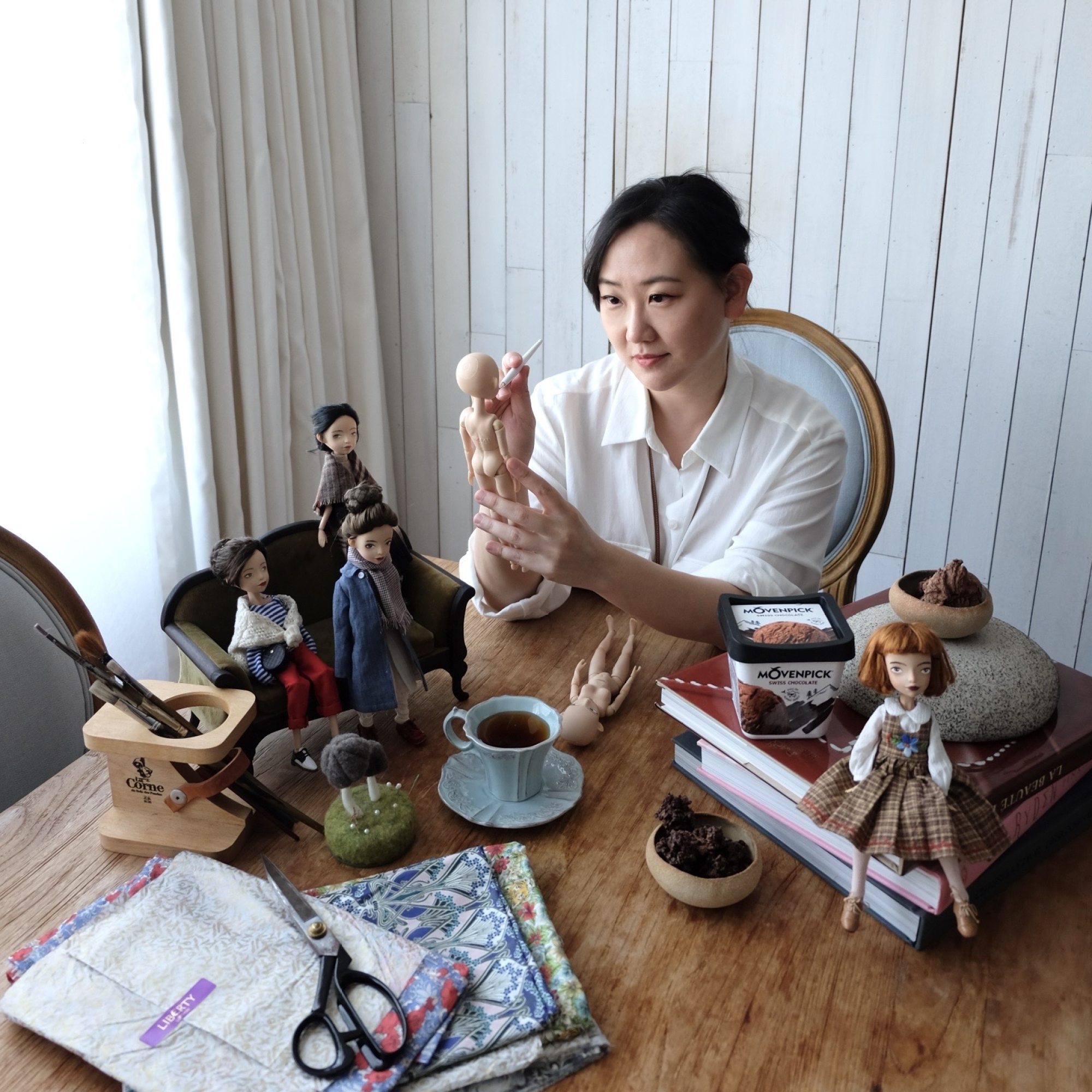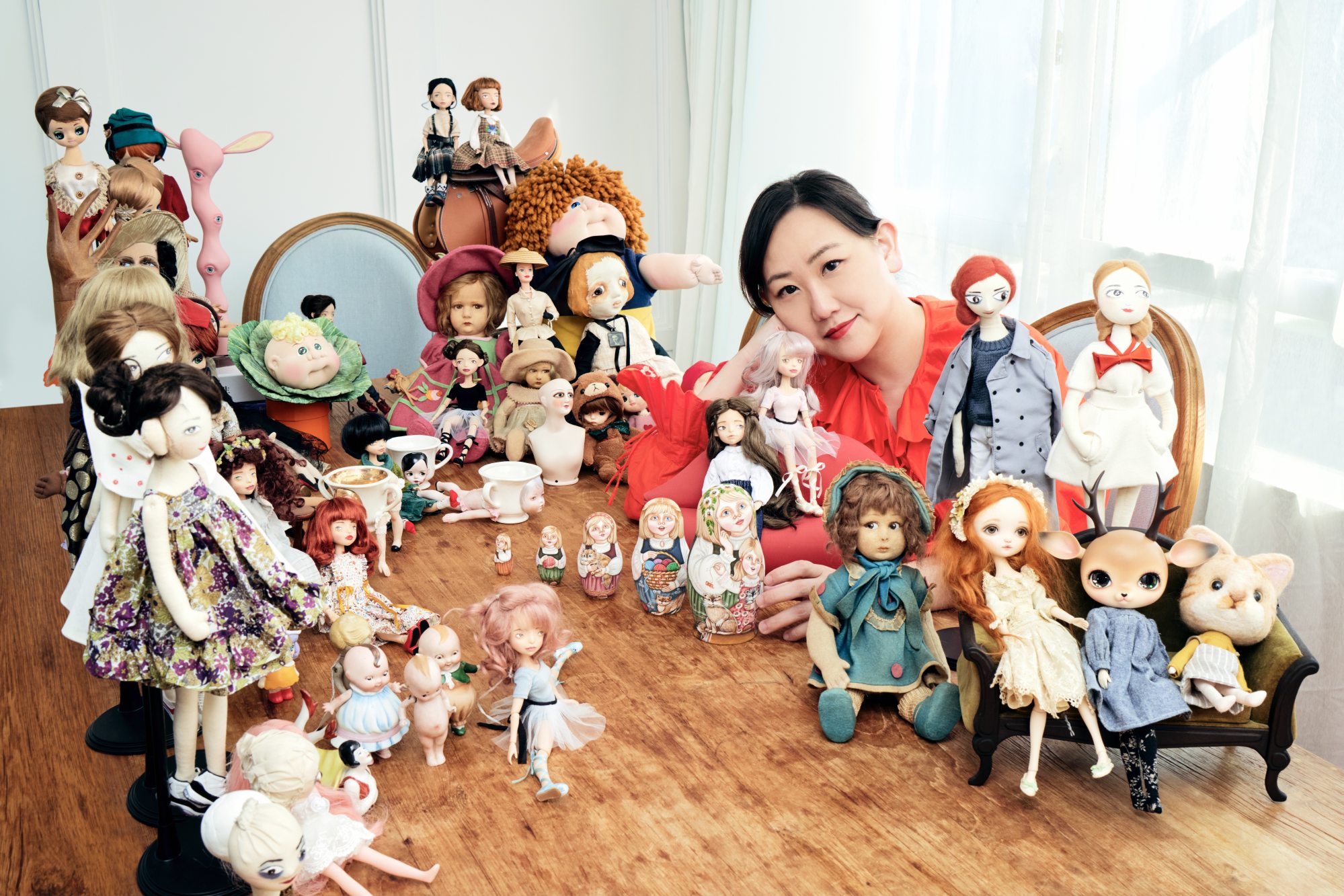
Profile | Hong Kong’s Ning Lau makes Barbie-like dolls that wear Chanel, Hermès – a far cry from the paper dolls she made when she was poor
- As a child growing up in Hong Kong, Ning Lau made her dolls out of tissues and paper. Her love of them lasted into adulthood – and making dolls is now her job
- Her creations have been exhibited everywhere from Japan to Russia and she often collaborates on doll collections with big-name companies and institutions
When Ning Lau graduated from university and began working, she started saving money – but not for a future holiday or a deposit on a home. Instead, she had her heart set on buying dolls.
“It’s because I really wasn’t able to afford a doll when I was young,” she says. Having grown up poor – Lau’s family lived in a public housing estate in Hong Kong – she remembers becoming enamoured with dolls and having to make her own with tissues and paper.
Fast forward 30 years and Lau’s love for dolls has proved a lasting one. Not only has she collected more than 500, including rare vintage 1930s Lenci dolls and 1960s Bradley dolls, but she has also turned making dolls into her full-time job.
“I collect dolls, I love dolls and I make dolls now,” she says. “I’m chasing my dreams.”

Her creations, described as Barbie-like Asian dolls, have been exhibited everywhere from Japan to Russia. In Hong Kong, she has created limited edition ones for major businesses and institutions, including fashion conglomerate I.T Group, the Peak Galleria shopping complex, the Hong Kong Ballet and the Hong Kong Trade Development Council (HKTDC).
Most recently, Lau collaborated with the city’s M+ museum of visual culture, for which she created 12 dolls inspired by the exhibition “Madame Song: Pioneering Art and Fashion in China”.
M+ overdoes celebration of Chinese artist and influencer Madame Song
Lau, who studied fashion at Hong Kong Polytechnic University, had originally pursued a career in fashion marketing. She rose to become vice-president of marketing and communications at the Lane Crawford Joyce Group, and then regional marketing and communications director at Christian Dior.
However, she soon grew tired of the job’s hectic travel schedule and decided to launch her own digital marketing agency in 2014. Her clients included big-name brands such as Nike, Chanel Beauty, Burberry and Johnson & Johnson.
“For most people, travelling to Paris, London every season to see fashion week is something really exciting,” she says. “[But I was] completely not enjoying it. People holding a glass of champagne and all, it looks very glamorous, but to me, it’s just really tiring, putting on the high-heeled shoes and things like that.”

Late one evening in April 2015, Lau spontaneously made her first doll, which she named Lisa, with cotton and fabric she had at home as a way to de-stress. She posted a picture of it on social media and, as friends commented and offered support, representatives of brands – including ones she had worked with as a marketer – began contacting her about possible collaborations.
Lau began taking on a number of projects, creating dolls for window displays, small collections for brands and more. One of her first major collaborations was with Japanese beauty brand Shu Uemura, for which she created a set of display dolls featuring make-up from the 2015 Shu Uemura x Maison Kitsuné collection.
Another collaboration was with HKTDC’s Design Gallery, for which Lau created a set of dolls inspired by notable Hong Kong attractions and the city’s cuisine. One doll donned a dress that resembled a har gow (shrimp dumpling), while another was dressed in a top adorned with curry fish balls.

At the time, Lau was still running her marketing agency, but she eventually closed it in early 2019 when her office rental contract ended. A growing number of offers to collaborate prompted her to focus fully on doll-making.
Now, aside from giving weekly classes, Lau’s doll-making business has three main strands: collaborations with brands, collections based on her personal interest, and customised orders, for which there is a waiting list.
“From my record, I calculated – I’m a very hard-working person – I actually [made] one doll every day in the past five years,” she says. “[But] there is a waiting list because I can’t really do a lot every month.”

Since her early days of making dolls, Lau has graduated from using materials found around her house to working with a toy factory to produce the bodies of her dolls, now using plastic. But she still paints each doll’s facial features, attaches the dolls’ hair and dresses them individually by hand.
Although her dolls may draw comparisons to Mattel’s Barbie doll, Lau’s creations are a little different, she says – not all of them have that plastered smile and big eyes typical of other dolls.
“I do feel like sometimes the doll is like a friend,” she says. “It’s something real – they’re not dolls, they have life. So they’re not happy all the time … they have their own emotions.”

Each one of her dolls’ expressions varies ever so slightly – some look pensive, others can even look glum.
Lau produces two versions of her dolls, one of which is closer to plus-sized. “It’s my figure, more chubby, a bit curvy,” she says of wanting her dolls to reflect real life, as opposed to the typical beauty standards seen in other dolls.
One thing that her dolls do have in common with Barbie dolls is impeccable fashion sense, owing to Lau’s fashion background.
“Of course, they dress really fashionably,” she says. “They are wearing Chanel bags, Birkin bags, [they] wear the clothes that we would [want to] wear.”

For her 2021 collaboration with Hong Kong Ballet, which sold out in an hour, her dolls wore delicate tutus and ballet slippers; her recent M+ collection was inspired by glamorous outfits that Song Huai-kuei wore in her lifetime.
Dolls in the latter collection are being sold for HK$4,800 (US$614) each – a hefty sum, but reflective of Lau’s labour and its limited run. If people think her dolls are too expensive they just will not buy them, she says.
While Lau still makes some of her dolls’ clothes and accessories by hand, she also visits doll expos and handicraft trade shows around the world, from which she sources accessories and materials.

“I can do it, but compared to the professional accessories miniature artists, they’re the best,” she says.
Aside from doll-making, Lau operates a variety of other businesses. She runs a virtual second-hand clothing store called Second Life, and a private kitchen with her sister called Chopsticks Sisters – the fruit of another lifelong passion, cooking.
Earlier this year, she studied French cuisine at the Le Cordon Bleu in Paris; her sister studied bread-making. Inspired by her time there, Lau has created two dolls in Le Cordon Bleu uniform, which she hopes to extend into a mini collection.

In the future, she hopes to invite doll artists from around the world to run workshops in Hong Kong, so that enthusiasts have the opportunity to learn from experts, engage in more activities, and create a community. And of course, she will continue making her handmade dolls.
“I’m very lucky to be able to work [on] things that I really love, that I’m passionate about,” she says. “I really love my job.”

